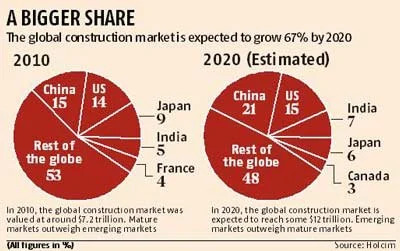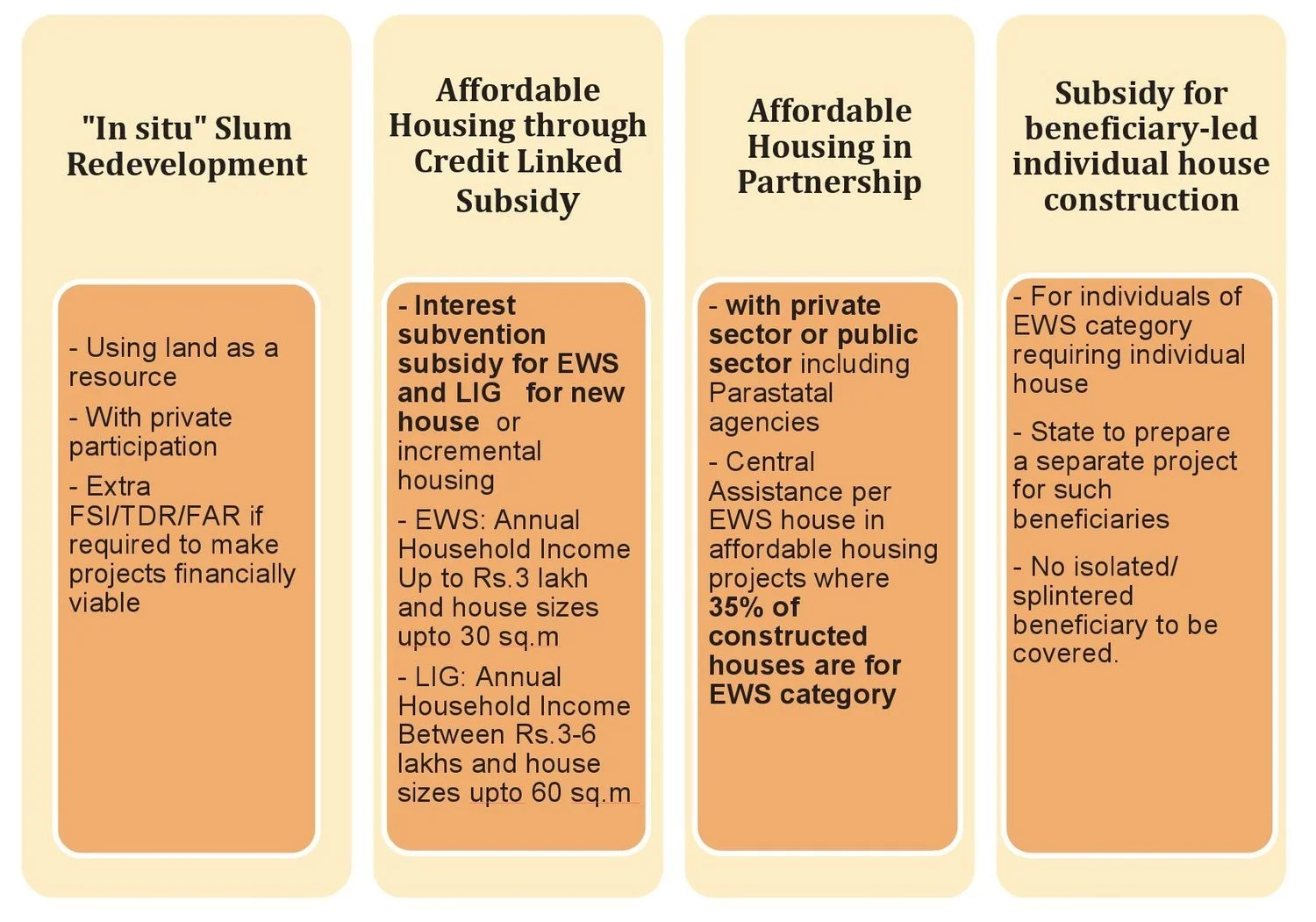Affordable housing – macro to micro perspective for design intervention
Cities have the capability of providing something for everybody, only because, and only when, they are created by everybody. – Jane Jacobs
With current world political development, migration and urbanisation are transforming cities across the world. In this scenario access to housing has become centre of development and discussion.
Under the rapid urbanisation by 2020 India is going to witness the population growth and urban migration (2). This will change the housing sector in the country. By 2020, India is expected to capture 7% of global requirement in construction sector to meet its housing demand.
The country is going through huge transition from new government, demonetization, policy reformation and budget. One of the important policy announced by the government is “Housing for All by 2022” to tackle the housing shortage through national level policy. By 2019, India will required 9.44 lakh houses.
This program is focusing on issue of rapid urbanisation and migration across the country (4).
Based on this UDRI and The Architecture Foundation conducted two day conference on State of Housing in India, to discuss and analysed the future requirement for this housing projects with architects, planners, academicians and policy makers.
Eminent Speakers in State of Housing;
-
Kirtee Shah, Ahmedabad – Some dimensions of the housing challenge in India : rural and urban
-
Sameep Padora, Mumbai – (Re)coding: in the name of housing
-
Nuru Karim – Housing beyond borders: multidimensional post earthquake reconstruction
-
Ashok Lal – Opportunities of collective living : affordability threshold and aspirational range
-
Hafeez Contractor – The design of housing : three decade of practice
-
Pankaj Joshi – suggestions on alternatives to slum rehabilitation authority model of housing in Mumbai
-
Prasnna Desai – tailor made transformation (peoples participatory approach to slum rehabilitation)
-
Sheela Patel – Reflections of four decades of working on urban habitat and informality
-
Amita Bhide – A call for sociological imagination of housing studies
-
Aromar revi – DYnamics of housing in India: trends and perspectives
-
Gautam Bhan – What we talk about when talking about Housing?
-
Alpa Seth – Construction of Rural housing under awas yojana : need for a fundamental change in strategy
-
Sharad Mahajan – Housing : a bottom up approach
-
Gautam Chatarjee – Will PMAY will solve the problem of housing for all
-
Pranay Vakil – Real estate of real estate
-
Vidyadhar Pathak – riddle of housing
The Housing for All by 2002 (Pradhan MAntri Awas Yojana) program main objective is;
This conference has helped to raise some important points related to Land as resource, technology intervention, redevelopment, improved infrastructure, private players and financing with the main focus on housing.For billionBricks as well as Architects, Planners and others in Housing sector this two day conference was insightful to understand the parameters of affordable housing in India. We hope that this short summary of this conference will help everyone to understand the transformation of housing in India and open new debate to develop the design intervention for better quality affordable housing for All.
The main theme of this conference was categorised under 4 sections;
-
Parameters for viable housing as seen by the government
-
Important policies, schemes and events since independence
-
Codifying housing typologies in the country
-
Challenges of specificities of governance and physical, political and social geographies
The Housing for All 2002 will change the Indian city completely and it’s some of the benefits as mentioned below,
-
The construction of such large number of housing will share in GDP and economic growth.
-
The will help to create investment and assets creation.
-
The job creation across rural and urban India through material production and construction.
-
The new housing development will help to improve the quality of life in Cities.
-
Their is possibility to achieve city without slum.
-
Most important is to achieve housing right through Housing for All program
How do you define Affordable housing?
-
The combination advantageous location with live and work affordable shelter makes it affordable housing. The integration of Affordable housing is very important across the fabric of the city.
-
For affordable housing the understanding of the ecosystem of housing production, distribution and consumption in varied scales of urban settlements is equally important.
-
Rental shelter on Leasehold/licenced land
Recommendations:
Design & Innovation
-
Promote innovation of quick build, demountable, transportable, temporary shelter.
-
Houses getting the full benefit MUST SURRENDER 10-15% of their footprint /land for common good This will help & benefit in creating open breathing/interactive spaces along the streets for the community/
-
Vehicular accessibility to be restricted & pedestrian accessibility encouraged
-
Part (percentage) of the unit cost must be reserved for site development
-
Slum upgradation as the solution of choice and transparent process for determining the tenability of slum rehabilitation
-
Building affordable housing stock in peri urban areas is important.
Players
-
Involvement of community in construction at individual house level & community level needs to be encouraged & accounted for financially
-
Partnerships with private sector are essential for large scale affordable housing
-
Creation of social/rental housing
-
Encouraging community participation to develop customised approaches for slum rehabilitation related to local needs
-
Corporatised agency for delivery of affordable housing
-
Accredit community based organisations
-
Promote public private partnership
-
Simplification of the process of approval for projects of affordable housing
-
Slum rehabilitation scheme for smaller towns under – affordable housing in partnership
-
Revitalise and reorient the role of state housing boards
-
Increase the corpus of the credit risk guarantee fund
Gaps or problems to achieve housing for all:
-
Rising housing stock and high levels of vacant housing coinciding with rising housing shortage
-
Maximum density and maximum FSI obviously impact costs and affordability
-
Housing market depends upon supply land
-
Availability of Land
-
Investment and developers
-
Permissions and clearance by Government authority
-
Finance
-
The quality of affordable housing largely affected because of construction and material quality, skill deficiencies.
To achieve this housing target the state of housing has helped to opened the new debate for inclusive solution for the urban and rural India.This open platform conference has helped us to understand the other affordable housing sector from architects, planners, officers and real estates perspective. billionBricks team is constantly working on developing inclusive and innovative design solution for housing, where the affordable housing related dialogue amongst professionals help us to gain more knowledge. Join this movement of Housing for All and participate through your comments and suggestions to help biilionBricks to contribute to this large demand of housing.
Resources:
by Madhura Joshi
Born in Aurangabad, Madhura did her MA in Architectural Regeneration from Oxford Brookes University, the UK where she researched on “adaptive reuse of medieval irrigation systems in contemporary urban development”. She worked with Abha Narain Lambah Associates, Adarkar Associates in Mumbai and Aidan Lynch, Oxford, the UK where she worked on conservation, heritage listing and adaptive reuse of urban scale projects.She has a keen interest in traditional art and craft. Madhura is the architectural design associate for BillionBricks, a nonprofit organization working in association with architecture BRIO for homeless people.







